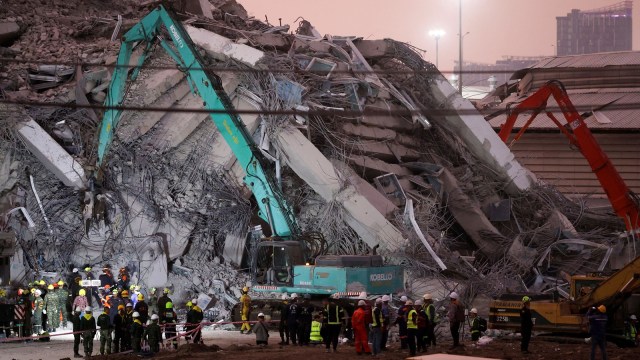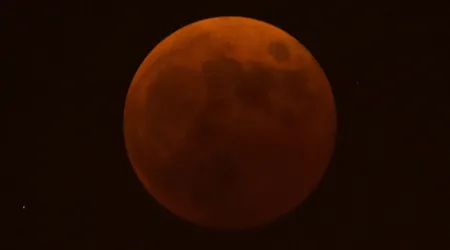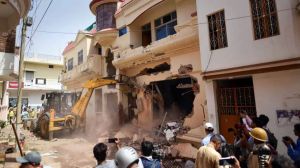When and where will the ‘biggest’ earthquake of all strike?
Myanmar Earthquake 2025: While Hollywood has hyped up ‘The Next Big One’ as a massive earthquake in the US, many believe that a much more devastating earthquake could occur in the Himalayas, affecting large parts of North India.
 Myanmar Earthquake 2025: The quake has reminded people of nature’s might, and the need to stay prepared for any eventuality. (Photo: Reuters)
Myanmar Earthquake 2025: The quake has reminded people of nature’s might, and the need to stay prepared for any eventuality. (Photo: Reuters)Biggest Earthquake in History: Myanmar has been rocked by a massive earthquake, with the effects being felt not just in Mandalay, the city nearest to the epicentre of the quake, but also in neighbouring countries like Thailand. At the time of writing, hundreds were feared dead, with casualty numbers going up, and property worth billions having been destroyed. The quake has reminded people of nature’s might, and the need to stay prepared for any eventuality. It has also reminded many of the most talked about earthquake of all – one which has not occurred, but one that many are expecting, knowing that it will occur at some stage. We even know where it is likely to occur and the damage it is likely to do. We only do not know when.
The quake many refer to simply as ‘The Big One’.
The quake in Myanmar was 7.7 on the Richter scale. Which has been the biggest earthquake ever recorded?
As per records, the biggest earthquake in terms of magnitude was the Valdivia Earthquake in Chile in 1960. It was a massive 9.4-9.6 on the Richter scale. It occurred on the afternoon of May 22, 1960, and is believed to have lasted 10 minutes. So massive was the quake that it resulted in tsunami waves hitting Chile, Hawaii, Japan, the Philippines, and even Australia and New Zealand. The death toll and total damage have never been accurately confirmed, with estimates placing the dead in the region of 1,000-6,000 people.
The deadly 2004 earthquake in the Indian Ocean on December 26, which unleashed massive tsunami waves and claimed more than 2,00,000 lives in many countries (including India), measured 9.2-9.3 on the Richter scale, and is supposed to be the most devastating earthquake of the 21st century. The Tohuku-Sendai earthquake that devastated Japan on March 11, 2011, and triggered off problems at the Fukushima Nuclear Plant was 9.1 on the Richter scale.
The OG Big One and THAT San Andreas Fault – fact and film
Initially, the Big One was the term that popular culture (mainly in the US) used to describe a massive earthquake that was expected along what is known as the San Andreas Fault (a fault is a break or fracture between two blocks of rock, leading to movements which result in earthquakes). This was based on a paper published in 1953 by two geologists, Mason Hill and Thomas Dibblee, who pointed out that earthquakes could occur along the fault, which spans more than a thousand kilometres in California in the US. Subsequent studies have predicted that earthquakes as powerful as 7-8 on the Richter scale could occur along the fault, devastating some of the most famous places in the world, including Los Angeles, San Diego and the San Francisco Bay Area.
Several films have been made around The Big One, including Earthquake (1974), starring the legendary Charlton Heston, and which even introduced a new technology called Sensurround that allowed viewers to “experience” earthquake-like tremors in cinema halls. The term, The Big One, got a further boost with the release of a TV film called The Big One: The Great Los Angeles Earthquake in 1990. The Big One was used again in 2015 for another earthquake disaster film San Andreas, starring Dwayne ‘The Rock’ Johnson. All three films focused on the devastation such an earthquake would cause in Los Angeles in particular and focused on the San Andreas fault.
The (new) Big One
While most popular narratives still associate The Big One with the San Andreas fault, in recent times, geologists (most notably Brian Atwater, Kenji Sitake and Chris Goldfinger) suspect that The Big One will actually come from a fault line that lies to the north of the San Andreas fault. This is called the Cascadia Subduction Zone, and it runs broadly along the coastal area from Vancouver in Canada to Northern California in the US. The fear is that the area could see an earthquake between 8 and 9.2 on the Richter scale, triggering massive waves that could submerge entire cities. While this would not be as large in terms of magnitude as the Valdivia Earthquake in Chile, it would cover a number of highly populated urban areas in the US (including Seattle, Salem and even parts of Washington), spread over more than a hundred thousand square miles, inhabited by more than five million people.
The destruction The Big One could cause
A lot of the analysis around the damage caused by The Big One generated by the Cascadia Subduction Zone revolves around casualties in the US. These are expected to run into tens of thousands, with millions being rendered homeless, and a large number of buildings and infrastructure being totally destroyed. Experts also fear that casualty numbers might end up being much higher as rescue services will be ineffective in many areas where the quake might have obliterated phone and road connectivity. The quake is also likely to have an impact on Canada and other regions.
The Big One is coming, but when?
Geologists are reasonably sure that The Big One will hit us, but there is no agreement on when that is likely to happen. Chris Goldfinger and his colleagues at Oregon State University say that there is a 37 per cent chance that a devastating earthquake could strike the endangered region by 2060. Incidentally, scientists have been able to work out that the last major earthquake in the Cascadia Subduction Zone was in the early 1700s, and it devastated not just parts of North America (the US did not even exist) but even wreaked havoc in Japan through tsunamis. Some consider these predictions to be alarmist but, interestingly, no one denies that a huge earthquake could occur in the region covered by the zone. It is coming, we just do not know when.
The REAL Big One could affect India
While Hollywood has hyped up The Next Big One as a massive earthquake in the US, many believe that a much more devastating earthquake (measuring around 8 on the Richter scale) could occur in the Himalayas, affecting large parts of North India, including heavily populated cities like Chandigarh and Delhi, and neighbouring Nepal. Casualties and damages from this earthquake, which some call The Great Himalayan Earthquake, are likely to be exponentially higher than those in The Big One (it’s not a competition, we are just stating possibilities), but no clear dates are available for this one. Another area which could face a Big One is the Marikina Valley fault system near Luzon in the Philippines, which is spread across a densely populated region of almost 3,000 square kilometers, including the capital, Manila. Experts say the region could experience an earthquake measuring 7 on the Richter scale, which could result in casualties running into over a hundred thousand. Once again, there is no real timetable, just the ticking of a seismic clock!
More Tech
Photos
Must Read
Apr 06: Latest News
- 01
- 02
- 03
- 04
- 05


























